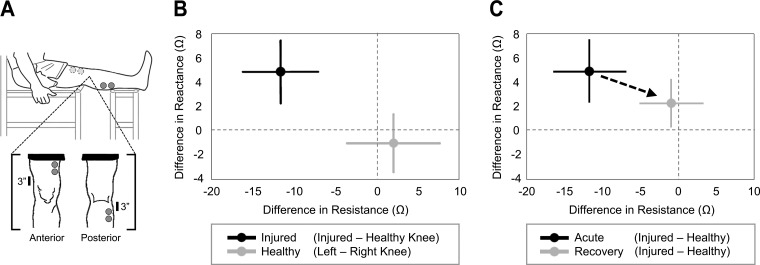Fig. 4.
Electrical bioimpedance (EBI) studies comparing healthy, injured, and rehabilitated knees. A: a representation of the posture (leg fully extended and supported) and electrode placement for EBI measurements. B: cross-sectional comparison for the difference in resistance and reactance for healthy (gray) and injured (black) subjects. For healthy subjects (n = 42), the differences were calculated as that between the left and right knees, whereas for the injured subjects (n = 7) the differences were between the injured and contralateral knees. The differences for the healthy knees were approximately zero, indicating no differences in edema between the knees, and the differences between the knees for injured subjects were significantly greater (P < 0.05) for both resistance and reactance. The error bars denote one standard deviation. C: the differences in resistance and reactance for injured subjects (n = 7) over time as a function of rehabilitation. Longitudinal measurements were taken prospectively from the time of acute injury (within 1 mo but before surgery, shown in black) and at a second time measurement during rehabilitation (4 to 7 mo postsurgery, shown in gray). During the recovery process, the difference in edema between the two knees trends toward zero. The error bars denote one standard deviation. [From Hersek et al. (19).]

